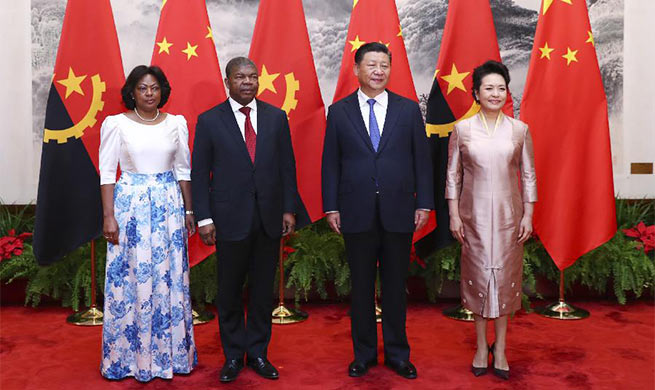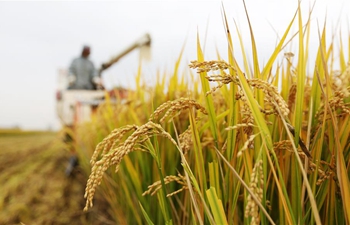LONDON, Oct. 10 (Xinhua) -- Strong GDP growth figures point to a rise in the bank rate sooner than is expected by markets, according to a leading economist.
The rolling three-month GDP growth rate was stable at 0.7 percent to the end of August, the best performance since February 2017, according to figures released on Wednesday by the official data body, the Office of National Statistics (ONS).
Monthly economic growth in August was flat, affected by a strong performance in July when consumer spending was lifted by the football World Cup as well as a heatwave. However, new data showed that July's GDP growth rate was revised upwards to 0.4 percent month on month.
Wednesday also saw independent economic think-tank the National Institute of Economic and Social Research (NIESR) release GDP data, with a forecast that the economy will expand by 0.7 percent in the third quarter and by 0.5 per cent in the final quarter of this year.
Amit Kara, head of UK macroeconomic research at the NIESR told Xinhua: "What is surprising is the strength of manufacturing. In the earlier part of this year there was a slowdown, particularly in manufacturing output in the second quarter.
"This was visible not just in the UK but a number of countries, what we have seen is a continuation of that slowdown in emerging economies whereas in developed economies it seems to have stabilized."
Kara said that in Britain there has been "a bit of a recovery across the board, the main surprise has been with manufacturing services, which is the more important sector of manufacturing in the UK -- that has been stable at about 0.5 percent growth."
Kara added: "Some of this is a catch-up from the first quarter's weakness. That should fade away. We expect growth to ease off in the fourth quarter, and there has also been favorable weather conditions and the World Cup. Those effects should fade too."
This kind of Robust GDP growth in this three-month period, combined with a rise in consumer price inflation (CPI) to a six-month high of 2.7 percent in August, and signs in July that earnings growth could be picking up, would normally fuel expectations that it would not be long before the central bank the Bank of England (BoE) raises interest rates again.
However, monetary policy is currently more influenced by the political climate than it is by economic data, and the uncertainty of the outcome of the Brexit process is the dominant consideration for policy-makers on the BoE's rate-setting Monetary Policy Committee (MPC).
Markets currently reflect their own misgivings over that political uncertainty with no bank rate rise priced in for before the expected Brexit date of the end of March.
Kara however believes that political clarity, and a scenario that sees a less-disruptive or softer Brexit taking place, will free the central bank to raise rates.
Kara said: "We hold to the view that under a Soft Brexit scenario the Bank of England will raise interest rates two times each year. This is more hawkish than the market, which is pricing in one increase a year. So we expect a rate increase in February, of 25 basis points."
This would take the bank rate to 2 percent, and leave the BoE with an option to raise rates again later in the year if the Brexit transition runs smoothly, with little economic impact.













